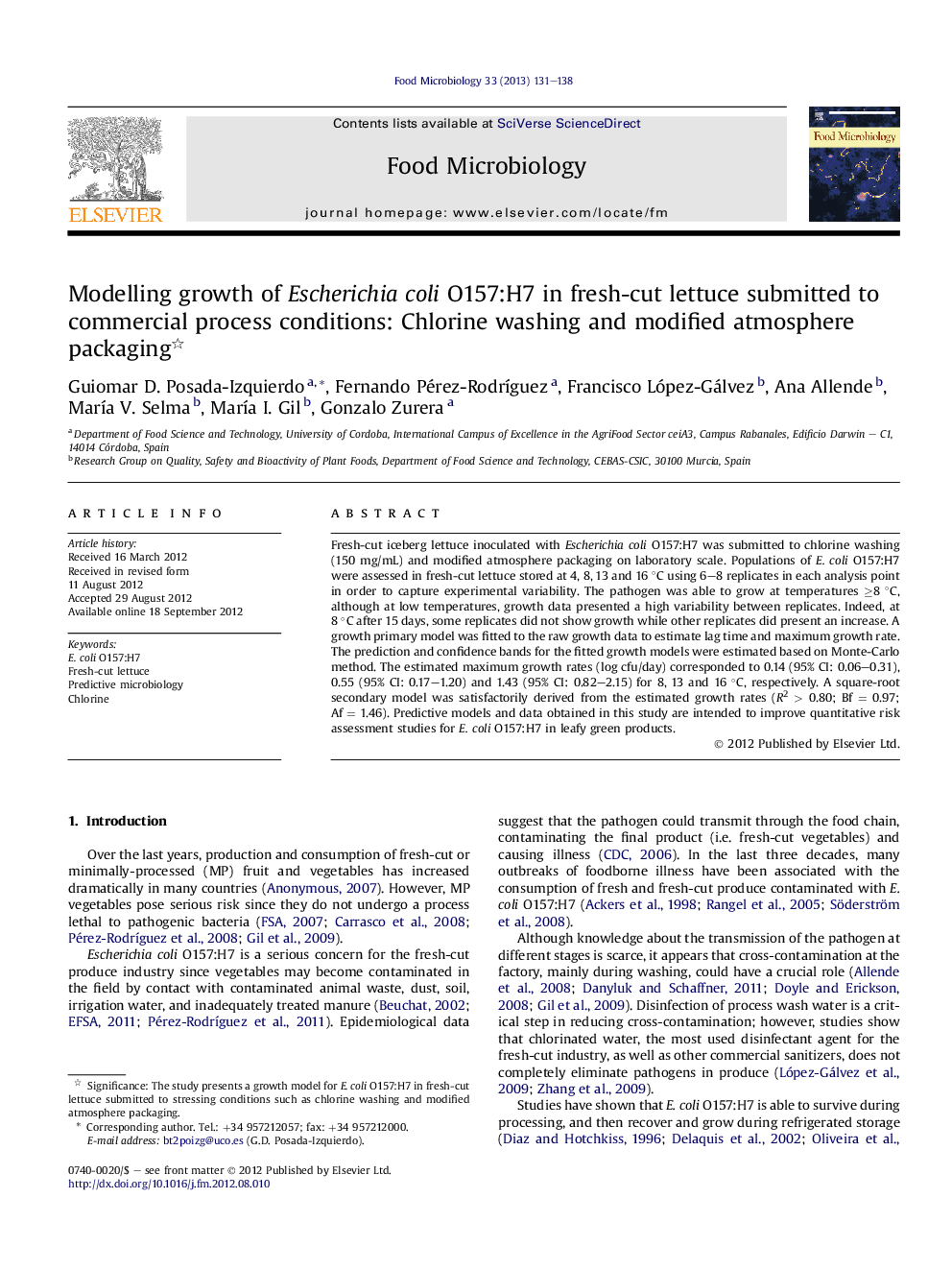| Article ID | Journal | Published Year | Pages | File Type |
|---|---|---|---|---|
| 4363016 | Food Microbiology | 2013 | 8 Pages |
Fresh-cut iceberg lettuce inoculated with Escherichia coli O157:H7 was submitted to chlorine washing (150 mg/mL) and modified atmosphere packaging on laboratory scale. Populations of E. coli O157:H7 were assessed in fresh-cut lettuce stored at 4, 8, 13 and 16 °C using 6–8 replicates in each analysis point in order to capture experimental variability. The pathogen was able to grow at temperatures ≥8 °C, although at low temperatures, growth data presented a high variability between replicates. Indeed, at 8 °C after 15 days, some replicates did not show growth while other replicates did present an increase. A growth primary model was fitted to the raw growth data to estimate lag time and maximum growth rate. The prediction and confidence bands for the fitted growth models were estimated based on Monte-Carlo method. The estimated maximum growth rates (log cfu/day) corresponded to 0.14 (95% CI: 0.06–0.31), 0.55 (95% CI: 0.17–1.20) and 1.43 (95% CI: 0.82–2.15) for 8, 13 and 16 °C, respectively. A square-root secondary model was satisfactorily derived from the estimated growth rates (R2 > 0.80; Bf = 0.97; Af = 1.46). Predictive models and data obtained in this study are intended to improve quantitative risk assessment studies for E. coli O157:H7 in leafy green products.
► Growth of Escherichia coli O157:H7 on MAP packaged lettuce after chlorine wash was assessed. ► Lettuce samples stored at 8 °C showed both growth and decline of E. coli O157:H7. ► E. coli O157:H7 could grow on lettuce at temperatures at 13 and 16 °C. ► Growth variability between samples was higher at lower temperatures. ► A square-root secondary model was adequately fitted to estimated growth rates for range 8–16 °C.
